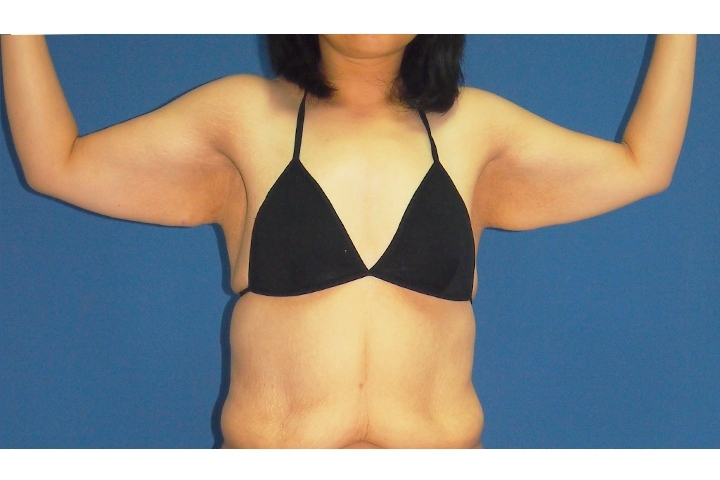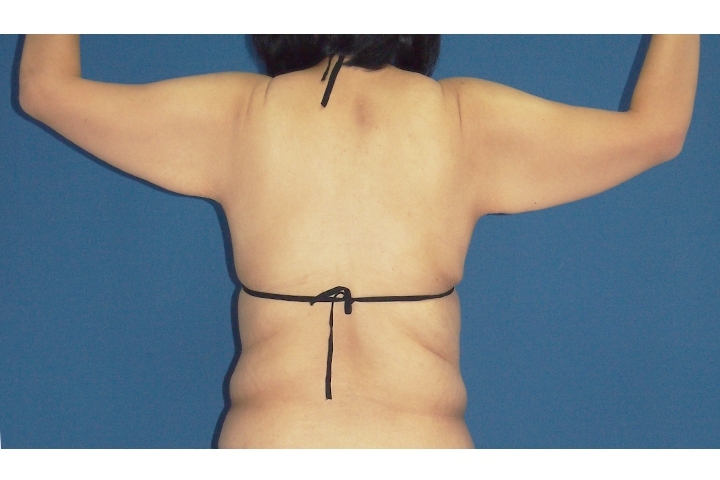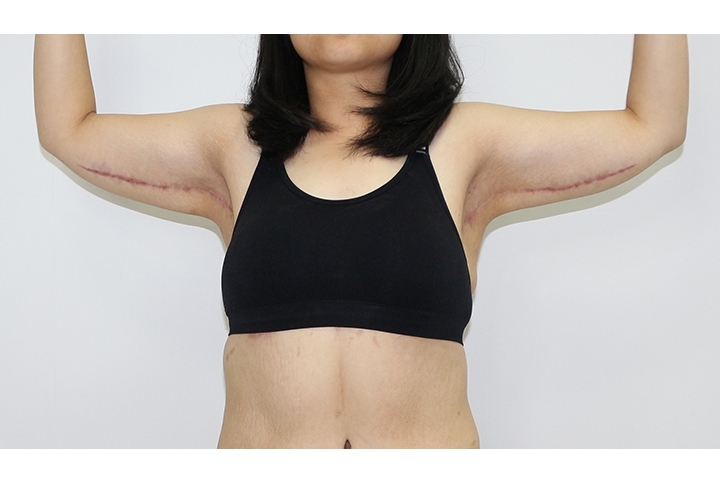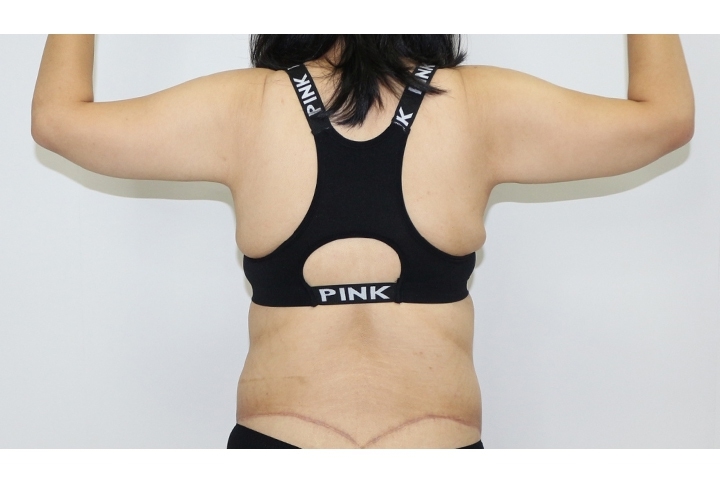Upper Arm Lift, Arm Lift in Bangkok, Thailand
An arm lift is a cosmetic surgical procedure to improve the appearance of the under portion of your upper arms. During an arm lift — also known as Brachioplasty — excess skin and fat are removed from between the armpit and elbow.
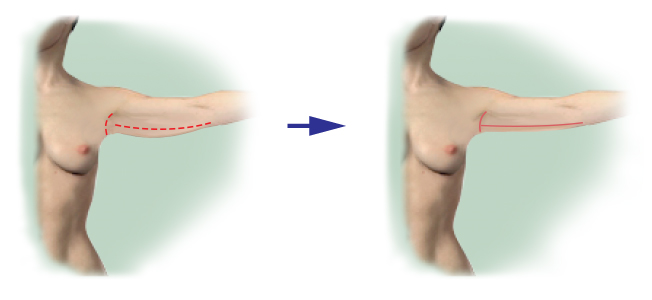
Figure 1: Upper arms lift incision line and scar
A Good Candidate for Upper arm lift
- A person who has significant upper arm skin laxity
- A person whose weight is relatively stable and who are not significantly overweight
- Healthy
- Nonsmokers Individuals with a positive outlook and realistic expectations.
Preparing for Upper arm lift surgery:
- Consult with the surgeon about your goal
- Blood test, physical examination or a medical evaluation
- Take certain medications or adjust your current medications
- Stop smoking- Stop taking aspirin, anti-inflammatory drugs, and herbal supplements as they can increase bleeding
Upper arm lift procedure includes the following steps:
- The surgery is performed under general anesthesia
- The incisions are generally placed on under the upper arms, depending on the surgeon's preference, extending from the underarm (axilla) to just above the elbow. Then, underlying supportive tissue is tightened and reshaped with internal sutures. Finally, the skin is smoothed over the new contour of your arm.
Post-operative care for arm lift
During your recovery from arm lift surgery includes.
- Dressings or bandages may be applied to your incisions, and your arms may be wrapped in an elastic bandage or a compression garment to minimize swelling following surgery.
- Avoid your arm activities that might stretch the incisions for 1-2 months
- Keep the wound clean and dry
- Take stitches off seven days after surgery
- Follow all post-operative instruction and attend all the appointments.
- A small, thin tube may be temporarily placed under the skin to drain any excess blood or fluid. Your incisions will be closed either with absorbable sutures, stitches that will be removed within one following your arm lift.
Risks and complications:
- Scaring
- Bleeding
- Infection
- Poor wound healing
- Unsightly scarring
- Fluid accumulation (seroma)- Damage to deeper structures such as nerves, blood vessels, and muscles
- The fatty tissue under the skin might die (fat necrosis)
- Numbness or other changes in skin sensation
- Pain, which may persist
- Anesthesia risk
- The possible need for revision surgery
Recovery for arm lift
During recovery, need bandage support for your upper arm for 4-8 weeks to decrease swelling. You will have bruising, swelling, and numbness that will be gone in several weeks. You can return to work one week after surgery. But don't lift or make stretch your arms for 4-8 weeks.
Getting to Know for Arm Lift
The best Procedure for sagging arm
The best Procedure for sagging arm
Arm lift scar
Arm lift scar
What is the risk to be aware?
What is the risk to be aware?
Before & After Arm Lift
Reviews: Arm Lift
Video: Arm LIft
What are the risks associated with the Thigh Lift procedure?
A thigh lift, like any surgical procedure, carries certain risks. Some possible risks and complications include:
- Infection: Any surgical procedure carries a risk of infection. This can be minimized by following your surgeon's post-operative instructions and by keeping the incision site clean and dry.
- Hematoma or seroma: These are collections of blood or fluid that can occur under the skin after surgery. These can be treated with medication or by reopening the incision.
- Numbness or tingling: Numbness or tingling in the skin of the thigh is a common temporary side effect of a thigh lift.
- Scarring: Scars will be visible after the procedure, but they will typically fade over time.
- Blood clots: Blood clots can occur in the legs or lungs after any surgery, and in rare cases, can be fatal.
- Anesthesia risk: As with any surgical procedure that requires anesthesia, there is a risk of complications from the anesthesia
- Unsatisfying results: The surgery may not meet the patient's expectation, either due to the patient's unrealistic expectation or due to the surgeon's technical issues.
- Asymmetry: Because everyone's body is unique, it is possible that the final result may not be symmetrical, leading to dissatisfaction with the outcome.
It's important to discuss these risks with your surgeon in advance, to understand the potential risks and to make an informed decision about whether or not to proceed with the surgery.






